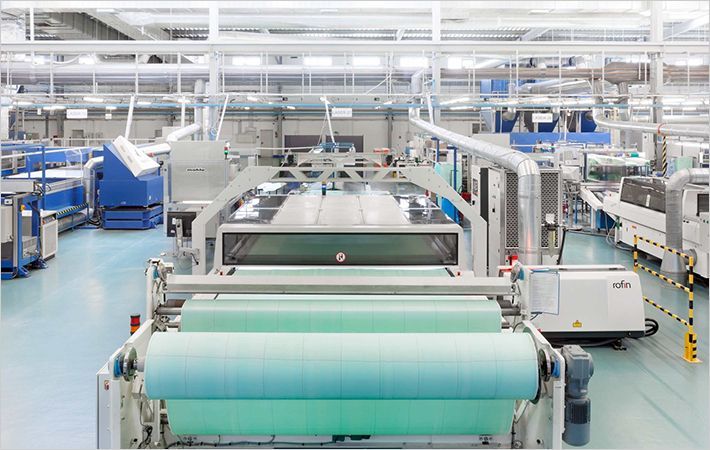Given the durability that Geosynthetics provide, they are increasingly being used for road projects in regions with high soil erosion and those susceptible to the vagaries of climate change, according to Anand Kumar, Managing Director, of the Union Transport and Highways Ministry's National Highway and Infrastructure Development Corporation (NHIDCL).
Kumar was speaking at the 2nd Global Geosynthetics Summit organized by the Confederation of Indian Industry (CII) with the theme of Enhancing Applications in Infrastructure.Given the durability that Geosynthetics provide, they are increasingly being used for road projects in regions with high soil erosion and those susceptible to the vagaries of climate change, according to Anand Kumar, Managing Director, of the Union Transport and Highways Ministry's National Highway and Infrastructure Development Corporation (NHIDCL).#
He said the Ministry of Textiles is incentivizing their usage by providing a subsidy for accelerating usage of Geosynthetics in road construction. Highlighting the manifold applications of Geosynthetics, he said there is need to sensitize people on the advantages of its adoption and their positive impact from a lifecycle cost – benefit perspective. Other advantages, according to him, include enhanced efficiencies, quality and a reduced carbon footprint.
Kumar emphasized on indigenous development, constant research and continuous propagation of the material for its increased usage. While pointing to the need for specific standards for use of new technologies and a quick dispute resolution mechanism, he emphasized on the need of wider consultations and continuous dialogue between all stakeholders including users, contractors, vendors and policy makers.
While enumerating the numerous benefits of the adoption of Geosynthetics in construction and infrastructure projects, Punit Lalbhai, Summit Chairman and Executive Director, Arvind Limited, said that the Indian economy is poised for great development. Geosynthetics would be the key pillar in realizing the growth. The world over, Geosynthetics has played a key role in infrastructure development in countries. He pointed out that Geosynthetics are predominantly technical textiles with multiple applications in bridges, railways and roads.
Lalbhai said that India needs to develop its own ability and capability to make best use of the huge underlying potential. In the Indian context, it lends improved quality, faster adoption, and lower life-cycle cost for all infrastructure development. He shared that CII had created a core group of industry, scientists and academia on Geosynthetics and emphasized on creating awareness of the technology among end users.
Brian Schou Nielsen, Director, Fibertex Private Limited, explaining the importance of Geosynthetics for the development of Indian infrastructure, said that while the global market is growing at 4-5 per cent per annum, that market in India and China is growing at 10 per cent. With climate change and carbon footprints being a big challenge for India, Geosynthetics products offer sustainable solutions. He said lack of specified standards and awareness was hindering the growth of Geosynthetics in India.
Vikramjeet Roy, Managing Director, Maccaferri Environmental Solutions Private Limited in his concluding remarks emphasized on the advantages of Geosynthetics over conventional construction methods and called for further investments. (SH)
Fibre2Fashion News Desk – India

